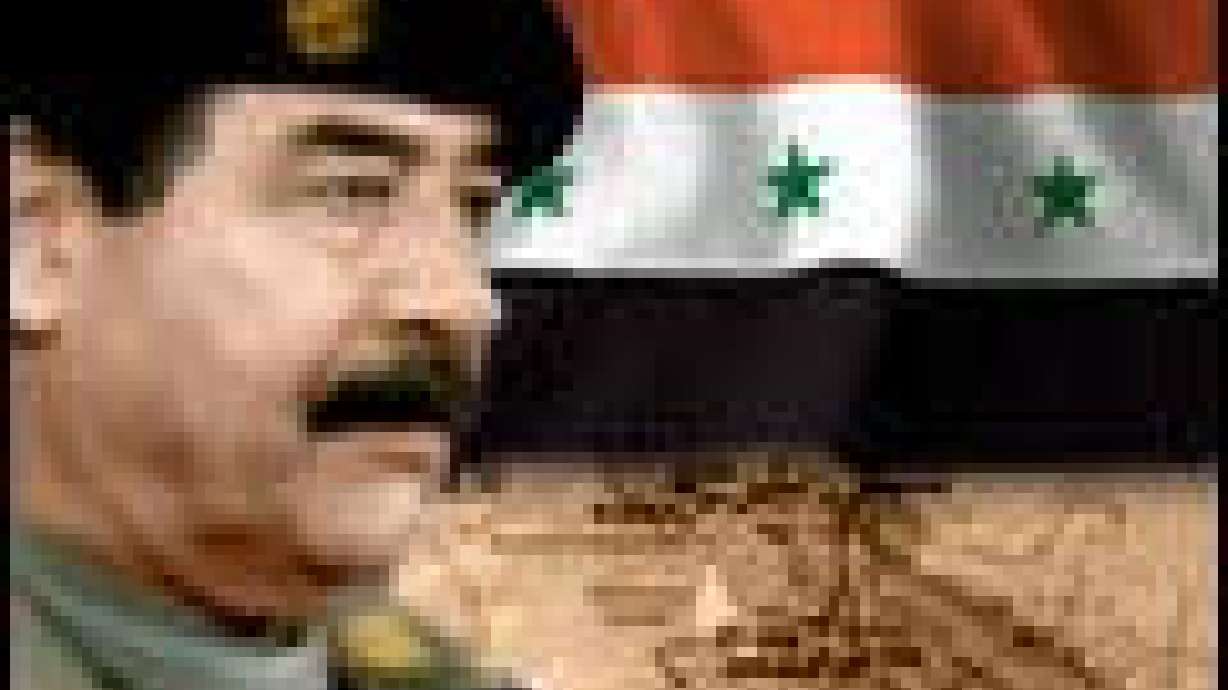Estimated read time: 4-5 minutes
This archived news story is available only for your personal, non-commercial use. Information in the story may be outdated or superseded by additional information. Reading or replaying the story in its archived form does not constitute a republication of the story.
BAGHDAD, Iraq (AP) -- A young woman's severed head and torso and a small boy's body were pulled Tuesday from a smoking crater carved into the earth by four U.S. bombs, so powerful they yanked orange trees from their roots. But there was no sign of the man those bombs were aimed at: Saddam Hussein.
For the second time in the war, coalition forces were wondering whether they'd gotten their man. One thing was all too clear, though: Once again, civilians had suffered.
When the broken body of the 20-year-old woman was brought out -- torso first, then the head -- her mother started crying uncontrollably, then collapsed. She was helped into a car by two male relatives.
Across the street from the crater, which lay amid the ruins of three houses, relatives squatted on the sidewalk and watched as rescue workers and volunteers, using a bulldozer and their bare hands, searched for their loved ones. Some wept; others just buried their faces in their hands.
U.S. officials said they believed their attack in the upscale al-Mansour neighborhood had successfully destroyed the target -- but that they didn't know exactly who had been inside, and what their condition was.
After the attack, a U.S. source said the target was a restaurant. But officials later said the intended objective was 100 yards from the only restaurant in the neighborhood, and that it was hit.
The site remained in Iraqi hands Tuesday. And while some officials said it would take a lot of digging and forensic work to determine if Saddam had been inside, it wasn't clear when that work could be done.
There was no unusual security around the bomb site Tuesday; not even a single policeman was in sight. Reporters were allowed to visit; by contrast, when U.S.-led forces first attempted to kill Saddam with an opening-salvo airstrike in the beginning of the war, reporters were not allowed to visit that suburban compound.
Acting on an intelligence tip, coalition forces attacked at about 3 p.m. Monday, turning the three houses into a 60-foot-deep crater. At least 20 other houses and nearly two dozen shops were damaged.
Strewn over surrounding streets were door knobs, ceiling beams, bits of wooden furniture, light fixtures and other debris. Three orange trees that once stood outside the houses had been uprooted; a palm tree in a backyard was charred.
An elderly man's body was found Monday night. On Tuesday, rescuers recovered the small boy's body, and that of the 20-year-old woman. The bodies were placed in blankets and quilts and put on the sidewalk.
"It felt like a strong earthquake," recalled neighbor Nahid Abdullah, 26.
"I flew for two meters (yards)," said greengrocer Hassan Ameen, 35. Others spoke of the sound of air being sucked before the blast was heard.
Neighbors said 14 people, including at least seven children, may have been killed, and scores wounded in the adjacent homes and shops, where debris and shrapnel blew out doors and windows.
Scores of Iraqis have been killed and hundreds injured in the U.S.-led air campaign on Baghdad. Civilian casualties have increased dramatically since U.S. ground forces arrived in the capital last week.
Taleb Saadi, a doctor at Baghdad's al-Kindi hospital, said 30 to 35 bodies arrived at the hospital Tuesday and as many as 300 wounded were treated at its emergency ward.
A U.S. official, speaking on condition of anonymity, said the Pentagon was confident that Saddam and his sons were at the targeted site before it was bombed. "Our intelligence was solid," the official said. He did not elaborate on the source of the intelligence.
On April 4, when Iraqi state television showed lengthy footage of Saddam -- or at least a man who looked like him -- on a walkabout of several Baghdad districts, one of those areas was the al-Mansour neighborhood.
Those close to Saddam have said the Iraqi leader is so obsessed with security that very few people would know about his movements. He maintains dozens of residences and uses doubles to keep people guessing.
On the opening day of the war March 20, President Bush authorized a strike on a suburban Baghdad compound where Saddam and his sons were thought to be staying. U.S. intelligence officials suspect that he survived that attack.
(Copyright 2003 by The Associated Press. All Rights Reserved.)








